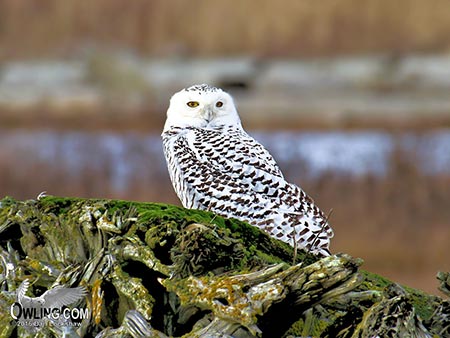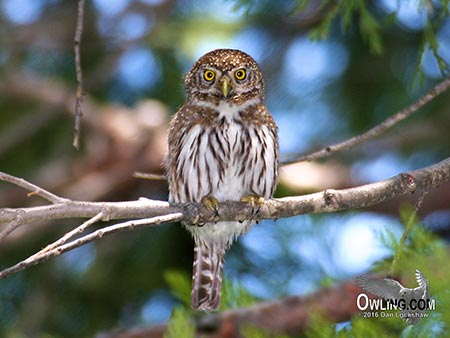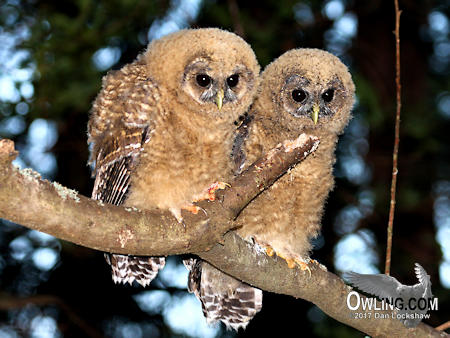 About the Owling.com Site
About the Owling.com Site
A Reference for North and Central American Owls
Through owling education, Owling.com is dedicated to the preservation of the owls found on the North American continent. The information is organized in a simple, understandable arrangement and format. An enjoyable approach is structured for those who are simply interested in what is making noises out their window, yet comprehensive enough for students and enthusiast who are studying or trying to identify the owls. The site is divided into several sections so the reader can find any owl species by name (scientific or English), region, or simply browse the owls by appearance.
Areas defined
The owls are divided into three geographic sections: North America, Central America, and the Caribbean. These three areas are defined as the birdwatcher sees them. The North American owls include all owl species that are found on the mainland US and Canada including Alaska and the Aleutian Islands. Central America includes all the owls found in the countries from Mexico through Panama. The final section covers the owls of the Caribbean. This section includes all owls found on the islands bordering and/or within the Caribbean Sea.
 Navigating to the Owls
Navigating to the Owls
Navigating to an owl can be done by rolling your mouse over the “Owls” tab in the header and choosing a region. From the region page, all the owls of that region have large thumbnails linked to each species’ page. The species on this page are arranged alphabetically by common name.
It is also possible to navigate to a species directly by rolling over the “All Owls” tab in the header and directly choosing a species by common name. The owl species pages can also be navigated to by choosing a checklist of the region and navigating from there. The checklists can be found in the footer of the site. The checklists are sorted by common name, scientific name, taxonomically, and by size. The checklists reflect our most current knowledge of the owl species on the American continent. Finally, the reader can select any species from the thumbnail sliders within the body of the main page or from the tabbed lists to the right of the sliders.
Biology Section
Also found in the header and footer is a link to the Biology of Owls. The main Biology of Owls page can be accessed from either of these links. The footer has an additional drop down list with direct links to each species biology.
The individual species biology pages contain a more in-depth look at each of the included North American owl species. The species accounts cover life spans, habitats, subspecies, food and feeding, breeding, etc. The section also gives sizes and weights with a comparison (in length) to common bird sizes to help visualize how big an owl is (albeit bulkier). It discusses how the owls feed, their hunting strategies, and hours of activity. The life spans text lists the greatest recorded ages in the wild, record age in captivity, and what is thought to be the average lifespan of the species in the wild.
 Species Pages
Species Pages
The core of the owling.com site is the species pages. These pages present information that no book can. Each of the species pages include photos, sound files, species definition, audio recordings, videos, field notes, and a range map. If a species, like Barn Owl, is found in more than one of the 3 areas covered by the site, it will be included in each of the areas it is ranged in. For instance: Unspotted Saw-whet Owl is only found in Central America, so it will only be listed within the Central America Owls.
Western Screech-Owl is found in the US, Canada, and Mexico so it can be found by either looking at the North American Owls or the Central American Owls. It is not found on any of the Caribbean Islands, so it will not be listed within this region.
Jamaican Screech-Owl is endemic to Jamaica, so it will only be found in the Caribbean Owls section. If an owl’s range extends beyond the covered scope of the site, like Short-eared Owl that is found worldwide, it is covered only within the context of the American continent. The exception to this is only in the two species of owls that have vagrant occurrences on the islands of Alaska. These Asian species have been added to owling.com since it is possible for these to occur in North America. If an unusual owl is found anywhere in North America, we hope owling.com is where people go to identify what they see.
Owl Photo Gallery Tab
Each of the sections on the species page have a wealth of information. The photos have text that discusses a range of topics. These may include where the owl was found, in what type of habitat, what was unique in its behavior, interesting markings, how bold or timid the owl was or maybe how this relates to the species in general. The photos not only show the owls from different angles but also from different regions.
Owls are defined by their calls since this is how they find each other, breed, and form species. They can vary significantly in size, color, markings, and plumage between different regions. A minimum of six different owl photos of each species, from different regions of the species range, is the goal of owling.com. Many of the owls have many more than this depending on range extents, variations, and general frequency or abundance.
All photos include a date and general location the photo was taken. Most photos on owling.com are taken during the hours the owls are active. You will see few photos that are taken of owls in a “front yard tree” in the daytime unless there is a good reason for it… like a parent keeping an eye on a nest from close by or it is a diurnal species. This is “owling.com” and intended to show the owls as they will be seen in the field in natural environments when the owls are active.
Audio Recordings Tab
Also found on the species pages are short recordings of the owls. These recordings have a sampling of calls with text that defines them. The recordings may be young owls calling to adults, territorial advertisement calls, mating calls, interaction calls, etc. For humans, being diurnal creatures (active in the daytime), visual images are largely how we recognize each other. The owl species are mostly nocturnal. They find and know each other by sound and we use these sounds to do the same. Owl vocalizations may vary in tone but their call is the same within a species no matter if the owl is in Alaska or Panama. The recordings are a critical part of the site and what immediately separates it from a book.
Videos Tab
Videos are new to owling.com. The future will bring many more of these to the site. The videos also bring a wealth of information. These show the owls in action and discuss the owls, how to see them, where they are found, their calls, etc. Like the photos, these are taken mostly at night (since most owls are nocturnal).
 Field Notes Tab
Field Notes Tab
The field notes on each species vary widely. Since the Central American and Caribbean Owls do not currently have separate writeups in the biology section, the species that are unique to this region will have a more expanded content focused towards a species account which include habitat, food, hunting, etc. The Field Notes for species with specific writeups on the Biology pages contain additional information about the species. This information is largely centered around field experience as you would expect in a field notes section. This may be about how to see a difficult species, research being done, general behaviors, aggressiveness, cautions, etc. The Field Notes section is cross linked with the biology pages where applicable.
Range Map Tab
The range maps are the most current range maps available. The maps show where the owls are ranged. For migratory species, they will also show both breeding (spring and summer) range and winter range. These can be clicked with a mouse to expand to a larger map.
Blog
The blog is a new addition to owling.com. This is a collection of articles about areas, places, and owl species. We will continue to write about the newest things going on with the owls and places to go see them. These articles may focus on current events like invasions from the north or new species being found (yes, new species are being described) or interesting places to see owls.
The Content
This is a free site with no fees or costs for the information contained here. All research, information and graphics have copyrights to protect them from being commercially exploited. This is freely available for use by students and individuals who will not publish, distribute (internet or otherwise), or publicly display the content provided within the site without permission.
A tremendous amount of cost and work has gone into the site and the information contained here. Please do not duplicate, publicize, or use the information without permission. The photos or range maps are not intended for other sites to use without permission. We do give permission on a regular basis to use this for purposes that promote owl conservation and public education or awareness.
Conservation
The conservation of nature is a responsibility we all hold. Each of us is a little different and the methods we use to see and conserve nature are also a little different. The concerns for both mankind and nature need to find harmony or we will lose the precious and irreplaceable biodiversity of our world.
The concerns for people’s livelihood as well as the conservation of nature must find a common ground. Landowners, developers, and environmentalists will set the stage as to what we leave for our children and future generations. Somewhere there is a balance between the concerns of landowners, developers, naturalists and environmentalists. The growth of our population, disappearance of habitat and our own differences in belief and levels of concern for nature are very real threats to the preservation of the planet.
The Future
All thoughts of going to a new star system is strictly fiction in current physics. It is also irresponsible to think we could just destroy this planet and its magnificent biodiversity and then just “start fresh” somewhere new. A basis of appreciation and concern for our world must be part of all of us. If owling.com helps to encourage appreciation for one set of our wildlife then it has done its job.
Balance
Nocturnal species and predators are not regularly seen by most people but they are crucial to the balance of nature. Mankind suffers when we forget the critical role the predators play in the balance of nature. This is clear in recent times with the spread of diseases in Africa resulting from our destruction of crocodiles. The natural wildebeest deaths during migration and the lack of predator base to consume the dying animals caused a mass rotting of animals and subsequent disease plague. The owls play the same role with keeping rodent populations in check and nature healthy.
Purpose
Owling.com is not a forum for debate on how to solve these problems. There is very little controversial information contained here for the methods of owling or the conservation of land. There are no exact locations for any of the birds because of the immensity of the internet and the potential pressure this would add to specific groups of individuals. General locations and dates are given for each of the photos and sound files so that specific races (subspecies) can be determined. If the viewer of the site gains a little appreciation for the owls and their awesome splendor, then that is good enough!
Enjoy your owling and experience in the site.
